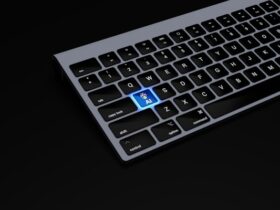Introduction: The New Power Broker in AI
In the ever-intensifying race for artificial intelligence dominance, OpenAI may have sparked the revolution — but Nvidia is rapidly becoming its architect.
Just weeks after OpenAI made headlines for its flurry of partnerships and product launches, Nvidia CEO Jensen Huang took the stage at the company’s GTC (GPU Technology Conference) in Washington, D.C., and unleashed a week-long cascade of announcements that shook both Silicon Valley and Wall Street.
By the time the event concluded, the message was unmistakable: Nvidia isn’t just selling chips anymore — it’s building the backbone of the global AI economy.
From partnerships with the U.S. Department of Energy and Eli Lilly to alliances with Uber, Foxconn, Mercedes-Benz, and Nokia, Nvidia’s GTC event became a masterclass in industrial dealmaking — one that positioned the company at the center of every major AI sector imaginable.
And amid a week already dominated by Federal Reserve updates and Big Tech earnings, Nvidia managed to seize the spotlight once again.
“When you already have the best chips and the best customers,” said Huang during his keynote, “the next thing to do is to find more of them — and empower them to build the future.”
Nvidia’s AI Dealmaking Blitz: A Global Web of Power Plays
Building the World’s Fastest AI Supercomputers
The first major announcement came in partnership with the U.S. Department of Energy (DOE): Nvidia will help design and power seven next-generation supercomputers, including one featuring 10,000 Blackwell GPUs — its most advanced chips yet.
The initiative aims to bolster America’s AI sovereignty and accelerate breakthroughs in climate modeling, defense, and biomedical research. Each supercomputer, Nvidia said, will be “capable of processing human-scale problems in near real time.”
This move not only extends Nvidia’s lead in high-performance computing (HPC) but also deepens its integration into critical government infrastructure — a strategic moat no competitor can easily replicate.
Driving the Future: Autonomous Cars and AI Mobility
Next came the transportation sector, where Nvidia has long been building its presence through AI-driven vehicle computing platforms.
At GTC, Huang announced collaborations with Uber, Foxconn, Stellantis, and Lucid Motors to develop AI-enabled autonomous vehicles and robotaxi fleets.
- Uber partnership: The two will co-develop an AI fleet management system for 100,000 self-driving cars, slated for mass production by 2027.
- Stellantis + Foxconn venture: Focused on robotaxi technology and smart mobility infrastructure, expanding beyond vehicles into citywide AI logistics systems.
- Lucid and Mercedes-Benz: Both automakers will integrate Nvidia’s Drive Hyperion platform, enabling Level 4 autonomy — vehicles capable of operating without human intervention under most conditions.
These partnerships cement Nvidia as the central nervous system of the autonomous vehicle industry.
Nvidia Enters 6G: A Surprise Collaboration With Nokia
Just when the audience thought the announcements might slow down, Nvidia entered an entirely new frontier: telecommunications.
The company revealed a strategic partnership with Nokia (NOK) to co-develop 6G wireless technology, which will use Nvidia’s AI architecture to optimize network design, energy consumption, and data routing.
The market responded instantly — Nokia’s shares surged 22% following the news, while Nvidia disclosed that it had quietly taken a 3% equity stake in the Finnish telecom giant.
This alliance marks Nvidia’s entry into AI-powered networking infrastructure, an arena traditionally dominated by Qualcomm and Ericsson. It also ties directly into the company’s sovereign AI vision, where nations build self-sufficient, AI-optimized networks.
Pharma Meets AI: Eli Lilly’s Supercomputer for Drug Discovery
In the healthcare sector, Nvidia’s collaboration with Eli Lilly (LLY) stood out as one of the most commercially and socially impactful.
Eli Lilly is building an AI supercomputer powered by over 1,000 Nvidia Blackwell Ultra GPUs. The system will enable drug discovery at a pace previously thought impossible — reducing molecular simulation timelines from months to hours.
According to Nvidia, the project will accelerate breakthroughs in genomics, precision medicine, and molecular modeling “at industrial scale.”
This partnership highlights a broader trend of AI-driven biotechnology, where pharmaceutical firms rely on high-performance GPU clusters to develop cures faster — and at a fraction of traditional costs.
“AI isn’t replacing researchers,” Huang said. “It’s amplifying them — giving scientists a superpower to see patterns that human eyes could never find.”
A Week of Hype, Deepfakes, and $5 Trillion Milestones
The intensity of Nvidia’s announcement blitz was so overwhelming that it spawned chaos — and even digital impersonation.
Scammers launched a deepfake livestream of Jensen Huang on YouTube, using generative AI to mimic his likeness and promote a fake cryptocurrency. At one point, the fraudulent stream attracted more viewers than Nvidia’s real GTC broadcast, underscoring both the hype surrounding the event and the very AI risks Nvidia’s technology helps fuel.
Meanwhile, in real financial markets, Nvidia made history — becoming the first company ever to close above a $5 trillion market capitalization.
President Trump even referenced the milestone ahead of a planned meeting with Huang, calling Nvidia “an engine of American leadership in technology.”
OpenAI vs. Nvidia: The Battle for AI Dealmaking Dominance
For most of 2025, OpenAI had been the undisputed AI dealmaking king — inking partnerships with Microsoft, Apple, Meta, Perplexity, and PayPal, while securing a $500 billion valuation.
But Nvidia’s strategic offensive has shifted the narrative. Unlike OpenAI, which builds and licenses software models, Nvidia’s dominance stems from hardware, infrastructure, and capital — the literal building blocks that make large-scale AI possible.
As of mid-October, Bloomberg reported that Nvidia had invested in 59 AI startups worldwide, using profits from its chip empire to seed an entire ecosystem of AI partners — many of which depend on Nvidia’s GPUs to operate.
This creates what analysts call the “Nvidia Network Effect” — an interlinked system where every AI startup, cloud provider, and research lab ultimately runs on Nvidia silicon.
“OpenAI may build the brains,” said Dan Ives, Managing Director at Wedbush Securities, “but Nvidia builds the body — the hardware, the blood flow, the muscle — of the AI world.”
The Bigger Picture: Nvidia’s Ecosystem Strategy
Nvidia’s recent moves go far beyond one-off deals. They’re part of a deliberate vertical integration strategy designed to anchor the company in every layer of the AI stack:
- Infrastructure: From sovereign AI supercomputers to national data centers.
- Software: Through CUDA, Omniverse, and Nvidia AI Enterprise tools.
- Investment: Funding early-stage startups through Nvidia Ventures.
- Hardware: Dominating the GPU market with Blackwell and Hopper architectures.
By embedding itself into both the public sector (through government supercomputers) and the private sector (through cloud, telecom, and healthcare partnerships), Nvidia ensures that AI progress anywhere is Nvidia progress everywhere.
It’s a strategy reminiscent of Intel’s dominance in the early internet era, but turbocharged for the exponential world of AI.
Conclusion: The Crown of AI Dealmaking Has a New Owner
For years, OpenAI defined the public face of the AI revolution — bold, experimental, and software-centric. But with the GTC event’s avalanche of partnerships, Nvidia has firmly claimed its role as the economic engine behind that revolution.
What makes this moment so remarkable isn’t just the scale of Nvidia’s deals — it’s the breadth. From supercomputers to 6G networks, autonomous cars to pharmaceutical labs, Nvidia has positioned itself as the infrastructure provider of the intelligent future.
As the AI era matures, the companies that thrive won’t just be those training the smartest models, but those controlling the most powerful ecosystems.
And in that contest — at least for now — Nvidia’s Jensen Huang may have just outplayed everyone.






